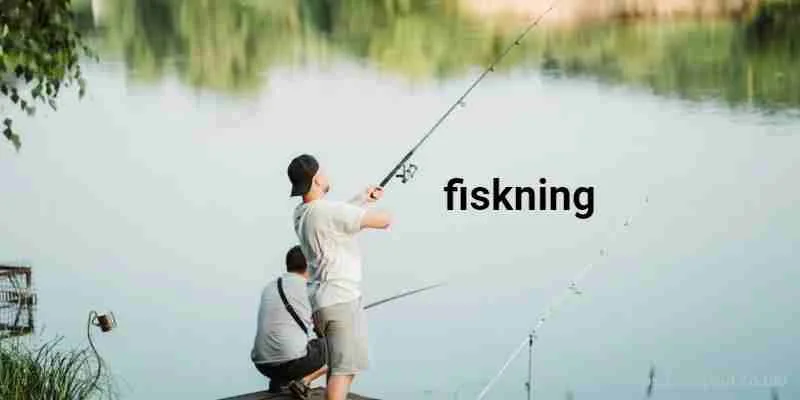Introduction To Fiskning
Fishing, or “fiskning” in Swedish, is a timeless and rewarding activity that connects people with nature. Whether you’re an experienced angler or just starting out, understanding the fundamentals of fiskning can enhance your experience and increase your success. This blog will explore the different aspects of fiskning, including techniques, equipment, and tips to make your fishing trips enjoyable and fruitful.
What is Fiskning?
Fiskning, the Swedish word for fishing, encompasses various methods of catching fish for sport, food, or leisure. It involves the use of fishing gear and techniques to lure and catch fish from various bodies of water, such as lakes, rivers, and oceans. Fiskning can be a peaceful escape into nature or an exciting sport, depending on how you approach it.
Different Types of Fiskning
- Freshwater Fishing: This type of fiskning takes place in freshwater environments like lakes, rivers, and ponds. Popular freshwater fishing techniques include fly fishing, baitcasting, and spinning. Freshwater fish species vary by region and may include trout, bass, and catfish.
- Saltwater Fishing: Saltwater fiskning occurs in oceans and seas. It includes deep-sea fishing, shore fishing, and surf fishing. Saltwater fish species are diverse and may include tuna, marlin, and snapper. Saltwater fishing often requires specialized equipment due to the challenging conditions of the sea.
- Ice Fishing: Ice fishing is a unique form of fiskning performed through holes cut into frozen lakes or rivers. Anglers use specialized gear such as ice augers and tip-ups to catch fish like perch, walleye, and trout in icy conditions.
- Fly Fishing: Fly fishing is a specialized technique that involves casting a lightweight fly to mimic the appearance of insects or other prey. This method is commonly used for catching trout and other freshwater species. Fly fishing requires skillful casting and a good understanding of aquatic ecosystems.
Essential Fiskning Equipment
- Fishing Rod and Reel: The fishing rod and reel are fundamental pieces of equipment for any type of fiskning. Rods come in various lengths and materials, and reels can be spinning, baitcasting, or fly reels. Choose equipment based on the type of fishing you plan to do.
- Fishing Line: The fishing line connects the rod and reel to the hook. Lines come in different strengths and materials, such as monofilament, fluorocarbon, and braided lines. Select a line suitable for the type of fish you’re targeting.
- Hooks and Bait: Hooks are used to catch fish, and bait attracts them. Bait can be live (such as worms or minnows) or artificial (such as lures or flies). The choice of hook and bait depends on the fish species and fishing conditions.
- Fishing Tackle Box: A tackle box helps organize and store your fishing gear, including hooks, lures, weights, and other accessories. It ensures you have everything you need at hand while fishing.
Tips for Successful Fiskning
- Research Your Location: Before heading out, research the fishing location to understand the types of fish present, local regulations, and the best times to fish. Knowledge of the area will improve your chances of a successful catch.
- Check the Weather: Weather conditions can impact fishing success. For instance, fish are often more active during overcast days or early mornings. Be sure to check the weather forecast and plan accordingly.
- Use the Right Technique: Different fishing techniques are suitable for different types of fish and water conditions. For example, use fly fishing for trout in clear streams and deep-sea fishing for marlin in the ocean.
- Practice Patience: Fishing requires patience and persistence. Be prepared for periods of waiting and avoid getting discouraged if you don’t catch anything immediately.
- Respect Nature: Follow local fishing regulations and practice catch-and-release when appropriate to ensure sustainable fishing practices. Always clean up after yourself and respect wildlife and their habitats.
Conclusion
Fiskning offers a rewarding experience that combines relaxation, skill, and a connection with nature. Whether you prefer freshwater fishing, saltwater fishing, ice fishing, or fly fishing, understanding the basics of fiskning and using the right equipment can enhance your fishing adventures. By researching your location, using appropriate techniques, and practicing patience, you can enjoy successful and memorable fishing trips. Embrace the art of fiskning, and let the tranquility of fishing enrich your life.
Also Read: Name That Means Lioness NYT
FAQS
What is fiskning?
Fiskning, or fishing in Swedish, refers to the activity of catching fish for recreational or commercial purposes. It encompasses various techniques, including angling, netting, and trapping.
Where can I fish?
Fishing locations vary widely and include:
- Lakes and rivers: Freshwater fishing spots.
- Oceans and seas: For saltwater fishing.
- Ponds: Often stocked with fish for recreational fishing.
Do I need a fishing license?
Yes, a fishing license is often required to fish legally. Regulations vary by location, so check local laws for specific requirements.
What are the best times to go fishing?
The best times to fish are typically:
- Early morning: Fish are more active during cooler temperatures.
- Late afternoon to dusk: Fish feed more aggressively as the sun sets.
- Seasonal considerations: Spring and fall are often the most productive seasons.
What types of fish can I catch?
The types of fish available depend on your location and the fishing environment. Common species include:
- Freshwater: Trout, bass, catfish, and pike.
- Saltwater: Salmon, tuna, and snapper.
How do I practice catch and release?
Catch and release is a practice aimed at conserving fish populations. To do this effectively:
- Use barbless hooks to minimize injury.
- Handle fish gently and wet your hands before touching them.
- Remove the hook quickly and return the fish to the water as soon as possible.
What should I do if I catch a fish?
If you catch a fish, you can choose to keep it (if it’s within legal size and bag limits) or practice catch and release. Always check local regulations regarding size limits and protected species.












